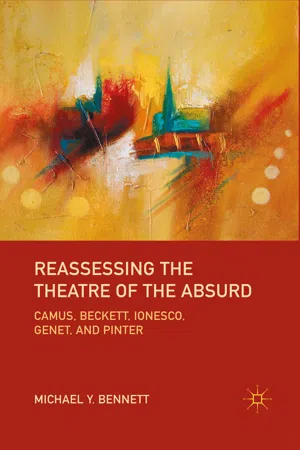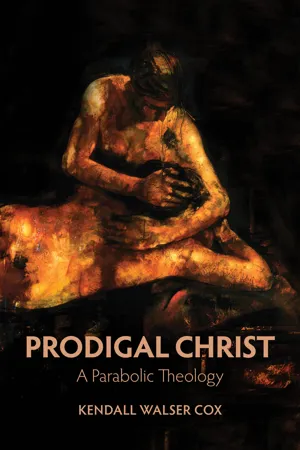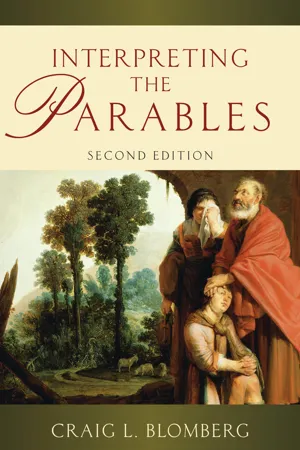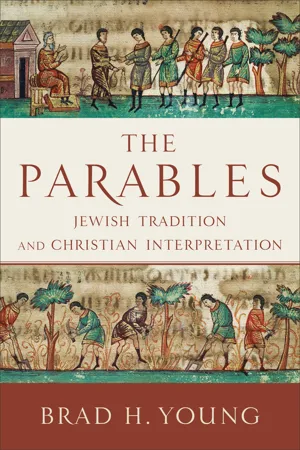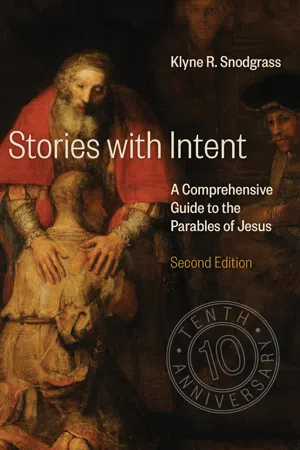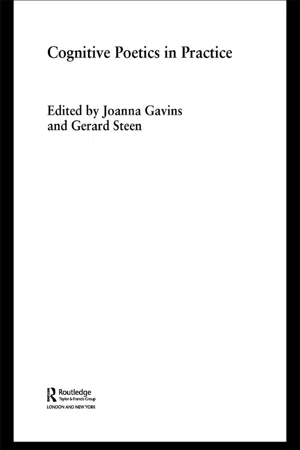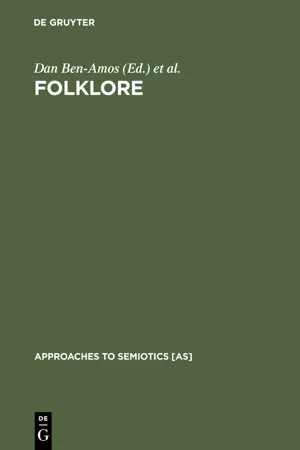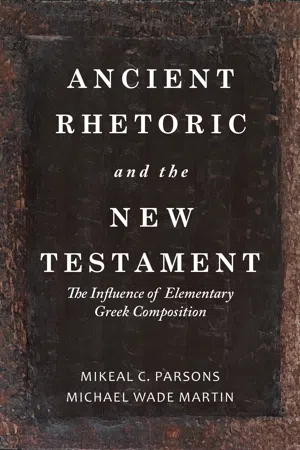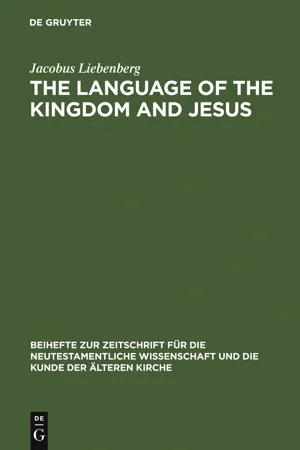Literature
Parable
A parable is a short, simple story that illustrates a moral or spiritual lesson. It often uses familiar characters and settings to convey deeper truths or teachings. Parables are commonly found in religious texts, folklore, and literature, and are used to provoke thought and reflection on ethical and philosophical themes.
Written by Perlego with AI-assistance
Related key terms
1 of 5
10 Key excerpts on "Parable"
- eBook - PDF
Reassessing the Theatre of the Absurd
Camus, Beckett, Ionesco, Genet, and Pinter
- M. Bennett(Author)
- 2011(Publication Date)
- Palgrave Macmillan(Publisher)
I set out to define the Parable, not so the Parable can be a piece of writing of exclusivity. I set out to define the par- able so that when a Parable is encountered, the total meaning of the Parable can be weighed against its combined elements. Even more so, the structural definition explains and gives justification to the thematic definitions over the years. When attempting a definition, one usually starts with the Oxford English Dictionary. It is imperative for a paper discussing Parables to con- sult it, not for what the definition adds, but to understand how out of touch the definition is with Parable studies. The definition reads, “An allegorical or metaphorical saying or narrative; an allegory, a fable, an apo- logue; a comparison, a similitude.” 1 Unfortunately, the definition in the Oxford English Dictionary is most off-base because of the inclusion of the word allegory. This article will begin by showing how allegory and Parable differ, but this is not the main focus. This article offers up a summary of the state of Parable research 2 and then redefines the Parable using the Parable of “The Prodigal Son.” The field of Parable studies, after seeing its heyday in the 1960s to 1980s, has been relatively stagnant in offering up new ways to conceptualize the Parable. Since there is much agreement 112 ● Addendum #1: Defining the Parable as to what a Parable is, I will draw on the works of many scholars to come up with an amalgamated definition: a Parable is a narrative that works by extended metaphor that finds the extraordinary in the ordinary and contains either a paradox, a reversal, or a turn. This addendum aims at offering up a new definition. A Parable, as I see it, is a performative didactic metaphor that usually contains both a metonymic paradox and an open-ended dilemma that calls for interpretation from the audience. - eBook - PDF
Prodigal Christ
A Parabolic Theology
- Kendall Walser Cox(Author)
- 2022(Publication Date)
- Baylor University Press(Publisher)
It is initiated within the bounds of the narrative form. “The narrative metaphorizes itself.” 187 To summarize, Parable is defined as a narrative form that undergoes a met- aphorical process, which is initiated textually—contextually, intertextually, literarily. While a Parable is not technically “a metaphor,” metaphor is indeed essential to understanding the form, function, and meaning of Parable. Fur- ther, understanding metaphor properly engenders interpretative possibilities of the sort that might otherwise get shut down as tangential impositions. Figuration, Spiritual Meaning, and the Narrative Outside Standing back from the problem of definition, a few formal anxieties inter- lace various attempts to define Parable in terms of metaphor in sharp distinc- tion from allegory. They center on Parable’s supposed (1) opaqueness, (2) (ir) reducibility, and (3) referentiality. The worry about opaqueness is that if the Parables are written or read allegorically, they require a thick interpretive context in order to grasp the meaning. It could seem as if Jesus does not really want to be understood, or at least not by everyone, and that is uncomfortably exclusionary. We must reckon with the hard teaching: “To you has been given the secret of the kingdom of God, but for those outside, everything comes in Parables; so that seeing they may indeed see but not perceive, and they may indeed hear but not understand; lest they should turn again, and be forgiven” (Mark 4:11–12; cf. Matt 13:13–18). 188 This passage has led some to view the par- ables as strategies of exclusion, veiled revelations, riddles intelligible only 185 Ironically, then, taking Christ as the metaphorical referent is mistaken for an “allegorical” claim precisely on allegorical grounds—that is, based on the expectation of a one-to-one correlation between figures. But, as I will show, Julian and Barth both resist a simple one-to-one identity between the son and the Son. - eBook - ePub
- Craig L. Blomberg(Author)
- 2012(Publication Date)
- IVP Academic(Publisher)
[43] These affirmations rely on four additional key principles.6. “Multiple points of comparison” is not the single element that makes a narrative an allegory; any narrative with both a literal and a metaphorical meaning is in essence allegorical. The primary pioneer of this assertion was Madeleine Boucher, who already in 1977 observed that for most literary critics there are only two “modes” of meaning—literal and tropical (pronounced with a long o—that which is popularly called “figurative”). Some examples of tropes include circumlocution (a “roundabout” way of speaking), metaphor, synecdoche (the substitution of the part for the whole), metonymy (the substitution of one thing for something else closely associated) and irony. Any one of these tropes may be developed into a full-fledged narrative; when a metaphor is thus developed, allegory results. Allegory is “nothing more and nothing less than an extended metaphor in narratory form (the term narratory here being used to include both dramatic and narrative works, that is, all works that tell a story).”[44]Boucher further argued that allegory is a device of meaning, not a literary form or genre. So a Parable may be an allegory even if its constituent elements do not involve separate metaphors, so long as the overall point of the Parable transcends its literal meaning (e.g., the story is about the kingdom of God rather than just, say, farming, fishing or banqueting). The only types of Parables that are not allegories, then, are either those that are so short that they are just simple comparisons rather than full-fledged narratives, or those that are extended synecdoches rather than extended metaphors, as in the Parable of the rich fool or of the Pharisee and publican, where the main characters are representative of an entire class of similar people. As for Jesus’ purpose in speaking in Parables, since he wanted to win his audiences over to his point of view, he had to be intelligible to them. Nevertheless, they could have found his meaning “mysterious,” since many may have been either unable or unwilling to identify the proper spiritual equivalents for Jesus’ down-to-earth metaphors.[45] - eBook - ePub
The Parables
Jewish Tradition and Christian Interpretation
- Brad H. Young(Author)
- 2008(Publication Date)
- Baker Academic(Publisher)
ParableSThe reality of God is revealed in the word-pictures of a Parable. Jesus and the rabbis of old taught about God by using concrete illustrations that reach the heart through the imagination. They challenged the mind on the highest intellectual level by using simple stories that made common sense out of the complexities of religious faith and human experience. On the one hand, in finite terms God is beyond human comprehension, but on the other, his infinite majesty may be captured in vivid stories of daily life.The Hebrew Parable, mashal (משל ), has a wide range of meanings. The word is stretched from its basic meaning of similarity or resemblance to cover any type of illustration, from a proverbial saying to a fictitious story. It may refer to a proverb, riddle, anecdote, fable, or allegory. A mashal defines the unknown by using what is known. The mashal begins where the listener is, but then pushes beyond into a new realm of discovery. The rabbinic Parable illustrates its point by redescribing, in drama, the nature of God and human responses to his love.The Greek Parable, parabolē (παραβολή), refers to what is cast alongside. The dramatic image of a story illustration is thrown out as a comparison of the reality of the source with its fictional representation in words. It may refer to a saying or story example. The idea of resemblance is not quite as pronounced in the Greek word parabolē as it is in the Hebrew term mashal , but both terms show a likeness between the images of an illustration and the object being portrayed. The Jesus of the Synoptic Gospels loves to use miniature plays to communicate his message. The word-picture of the Parable creates a drama that redescribes in clear terms the reality being illustrated. The resemblance between the reality and the illustration makes an instructive comparison.The genre of story Parables, however, seems to be independent of the terms selected to designate them. Jesus and the rabbis of old created these illustrations, and their stories became known as Parables. Jewish teachers seem to have developed the classic form of the Parable from their religious heritage and cultural experience. The method of teaching developed first, then the term Parable (mashal or parabolē ) was used to describe the story illustrations that resulted. In this book we will pursue an inductive study of the Parables, as mini-dramas designed to teach a message by illustrating a resemblance between the source of the word-picture and its redescription in metaphor. Moreover, we will look at the background of the story in Jewish culture and religion, as A. M. Hunter has already suggested in his fine, popular book on the Parables: “The word itself, parabole , is of course Greek, and means a comparison or analogy. Aristotle discusses it in his Rhetoric. But the antecedents of Christ’s Parable must be sought not in Hellas but in Israel; not in the Greek orators but in the Old Testament prophets and the Jewish Fathers.”[1] - eBook - ePub
Stories with Intent
A Comprehensive Guide to the Parables of Jesus
- Klyne R. Snodgrass(Author)
- 2018(Publication Date)
- Eerdmans(Publisher)
An obvious example is the Parable of the Unjust Judge, who is not like God at all. It is also possible for the contrast to be between human action and the action expected of God’s people. (See the discussion of the Unjust Steward, pp. 401-19 below.) What about Allegory? I have not included Jülicher’s fourth category, allegory, as a distinct kind of Parable. This is the term that has caused horrendous debate. Typically an allegory is defined as a series of related metaphors, 75 and the Parable of the Sower would be an obvious example. But life is never so simple, and in addition Jülicher thought allegories are obscure and need to be decoded. They are supposedly more obfuscating than revealing. Consequently, in biblical studies (but also in eighteenth- and nineteenth-century literary studies) allegory has frequently been viewed with disdain and suspicion. The claim is made that allegory says something other than what it means by placing pictures in front of reality, but Parable does the same thing. Both are framed on the reality they seek to portray. The claim that other forms enhance understanding while allegory presupposes understanding is absurd. When people speak of allegory, they frequently refer to extreme examples like John Bunyan’s Pilgrim’s Progress, but allegories can be as varied as Parables. Few people are even aware that The Wizard of Oz is an elaborate political allegory about conditions at the beginning of the twentieth century in the U.S.A., with “Oz” (the abbreviation for “ounce”) and the yellow brick road both referring to the gold standard (which was debated at the time), the scarecrow representing the farmers, the tin man the industrial workers, and the cowardly lion reformers, especially William Jennings Bryan - eBook - ePub
- Joanna Gavins, Gerard Steen, Joanna Gavins, Gerard Steen(Authors)
- 2003(Publication Date)
- Routledge(Publisher)
parabolic projection operates intertextually within a literary framework. This will be done by means of a literary case study. Lastly, I will draw this chapter to a close by briefly considering the wider implications of parabolic literary theory, regarding meaning both in the mind and the brain. In sum, what this chapter will seek to demonstrate is that Parable is a fundamental, continuous, cognitive instrument of thought that we employ, largely unconsciously, both in real-world meaning construction and in literary interpretation procedures.Some preliminary background
Before getting to grips with the central theory of the parabolic mind, let us first set out some preparatory background. A good starting point in this chapter on how cognitive parabolic reasoning operates is to remind ourselves of how the default, i.e. biblical, notion of Parable works. Traditional Parables are located in the New Testament of the Bible in the sections where Jesus can be found preaching about the kingdom of God. These stories were a kind of ‘metaphor in narrative form’, the primary purpose of which was to challenge the ingrained perspectives of the hearers. Parables therefore were told in order to project extra (essentially didactic) domains of knowledge into the existing world-views of the listeners. The result of this would have been a modification in the interpretative cognitive models of those listeners.The well-known story of the workers in the vineyard (Matt. 20: 1–16) provides a useful starting-point for an analysis of how Parables operate. In this parabolic tale, a number of people are set to work at different times of the day: some early in the morning and some late in the afternoon. When evening comes, the workers are paid the same amount. Those who worked all day then become angry: as do the Parable’s listeners. But Christ explains to them that in his father’s kingdom of heaven ‘the last (i.e. the poorest and weakest) shall be first’. ‘Mercy’ therefore, rather than ‘explicit reward’ is what is promised and indeed given. This didactic narrative twist, leading to a fundamental cognitive reappraisal of the world, can be seen in virtually all the biblical Parables. - eBook - PDF
Folklore
Performance and Communication
- Dan Ben-Amos, Kenneth S. Goldstein, Dan Ben-Amos, Kenneth S. Goldstein(Authors)
- 2013(Publication Date)
- De Gruyter Mouton(Publisher)
1 have chosen to analyze a Parable because, being a didactic metaphor, it usually appears in the course of non-narrative discourse such as conversation rather than as a relatively self-contained unit in a specialized storytelling session. Like fables and proverbs, Parables are a traditional technique for coping with problematic social situations. It is therefore especially appropriate to analyze the performance of a Parable as an example of interpersonal ritual behavior which attempts to restore harmony after someone has (Oxford, 1967), 40-46, 64-69, also discusses in detail the tale occasions among the Limba and describes particular performances as cases in point. See also Daniel J. Crowley, I Could Talk Old-Story Good: Creativity in Bahamian Folklore (= California Folklore Studies 17) (Berkeley and Los Angeles, 1966) and Malinowski, Myth. 108 BARBARA KIRSHENBLATT-GIMBLETT 'made a scene'. 6 This type of analysis with its emphasis upon the im-mediate context of use can also reveal how the social situation con-textualizes the meaning of a tale and foregrounds the themes which are relevant to the narrator on a particular occasion. Thus, following Malinowski's later refinements on the concept of context, 1 will be analyzing one storytelling performance in terms of the situation in which the utterance is being made and the situation to which it refers in order to dramatize the structure of a storytelling performance, the integration of narrative and social setting, and the contextual specifica-tion of meaning. THE NARRATOR AND HER REPERTOIRE Dvora Katz was born in 1915 in Brest-Litovsk, Poland, and came to Canada with her mother and siblings in 1929. Her mother, who died in 1949, is the chief source of the proverbs and Parables in Dvora's repertoire. - eBook - PDF
Oral Tradition and the Gospels
The Problem of Mark 4
- Barry Henaut(Author)
- 1993(Publication Date)
- Sheffield Academic Press(Publisher)
4. Allegory and Orality 193 mysterious, needing a key to be understood, is foreign to everything we know about him. His Parables are vivid, simple pictures, taken from real life. 1 Jiilicher's clear-cut distinction soon came to 'wear thin', but Gospel critics have always maintained a distinction between the two forms. The 'New Heremeneutic' as represented by Ernst Fuchs, Eta Linnemann and Eberhard Jiingel soon interpreted Parable as a 'language event'. Robert Funk and Amos Wilder afterwards linked Parable more closely with metaphor, and Dominic Crossan went on to propound Parable as an 'anti-myth' that shatters the hearer's normal myth-established expectations. 2 Throughout the discussion there has been a constant confidence that the distinction between the two forms allows for recovery of the original and authentic Parable. As set forth by Jeremias, and subsequently adopted by others, the oral transmission of the Parables followed rules that one can reconstruct. Allegorization was the first process of interpretation, either in a separate narrative (cp. Mk 4.14-20) or in the details of the Parable itself (cp. Mt. 22.2-13). Moralizing conclusions could also be added (cp. the Unjust Steward, Lk. 16.1-9), or the Parable could be provided with a secondary context (cp. the Good Samaritan, Lk. 10.25-37). 3 Despite this process of reinterpretation, scholars have remained confident in reconstructing the original oral form of the Parable. As Perrin expresses it, the Parables are so distinctive — that in broad structural outline they have survived the subsequent process of transmission very well, while, at the same time, the process of reinter-pretation was so obvious and so much at variance with the original thrust of the Parables themselves, that the original form and thrust of the para-bles have not proven difficult to reconstruct. - eBook - PDF
Ancient Rhetoric and the New Testament
The Influence of Elementary Greek Composition
- Michael Wade Martin, Mikeal C. Parsons(Authors)
- 2018(Publication Date)
- Baylor University Press(Publisher)
First, they are fictional and not historical paradigms. That is, they draw their analogy not from past occurrences but through “invented” action. Second, they are logoi . Most are “stories” in the modern sense of the past tense narrations with plot. Others are story-like “anal-ogies” still within the range of logos ’ meaning, including present tense narrations of action (e.g., the Parable of the Lost Coin above) and proverb-like sayings that abbreviate the action and thereby test the bounds of the genre (e.g., “Physician, heal yourself!” [Luke 4:23]; cf. the Aesopic fable of the same name, Babrius 120). Third, they without exception “give an image of truth”—and usually in the form of an explicitly stated moral. The diversity of truths imaged in Jesus’ Parables, moreover, falls within the broad range of imaging on display in ancient examples (and is particularly in line in its religious content with the prophetic fables of the Hebrew Bible). 33 One finds everything from ethical instruction (the Good Samar-itan, Luke 10:25-37) and reflection on shrewdness (the Dishonest Manager, Luke 16:1-13) to religious teaching (the Persistent Widow, Luke 18:1-8) and personal denunciation (the Pharisee and the Tax Collector, Luke 18:9-14), just as in other fables from antiquity. One sees in these Parables, too, the same literary features and practices we identified earlier in examples of fable from the ancient world. (1) They feature the same kinds of subjects and thus fall into the same theoretical classifications. 34 The vast majority are what the theorists call “rational” fables in that they feature humans as the main subjects—for example, the Parable of the Good Samaritan (Luke 10:30-37) and the Parable of the Wicked Tenants (Mark 12:1-11; Matt 21:33-46; Luke 20:9-18). Though not often counted as a Parable, the saying on the Ravens (Luke 12:24) is a rare example in Jesus’ preaching of the “ethical” class of fable devoted to animals. - eBook - PDF
The Language of the Kingdom and Jesus
Parable, Aphorism and Metaphor in the Sayings Material Common to the Synoptic Tradition and the Gospel of Thomas
- Jacobus Liebenberg(Author)
- 2011(Publication Date)
- De Gruyter(Publisher)
This kind of inflated language about the Parables grants to them a power which very few individuals or societies, much less literary texts, have ever held. Such language may be in the case of the Parables a result of confusing the speaker with that which is spoken. That a charismatic teacher, as the Jesus of the gospels is, could add power, dynamic emotion, and excitement to the teasing, puzzling quality oftheparbles is quite believable. That these stories, qua stories, however, have the inevitable ability to force hearers to lose control of themselves is rather unbelievable. Italics mine. 340 See the discussion below, chapter 3. Parable as Metaphor 163 Excursus: Parable and Reception I use the term reception in a very specific sense. It concerns the way a writer presents a Parable and specifically how he utilises the narrative/constituent elements of a Parable in order to effect a message of which that Parable is only a constituent element (and not the message itself). It proceeds from the view that the Parables are rhetorical tools of a similar order than ordinary proverbs and aphorisms which, although having a general meaning in themselves, are primarily intended as linguistic devices to be utilised in specific contexts. To talk about the reception of a Parable is an attempt to escape the quest for the original form, and of determining redactional traits in a writer's presentation of a Parable. It is an attempt to regard Parables as one finds them in Q, the Synoptics and Thomas as autonomous creations. Autonomy focusses on the fact that the Parables have a life of their own, that their generic-level structure enables them to exist context free as part of a language user's conceptual apparatus to be introduced into any context which is perceived by such a person to share a similar generic-level structure (as is the case with proverbs).
Index pages curate the most relevant extracts from our library of academic textbooks. They’ve been created using an in-house natural language model (NLM), each adding context and meaning to key research topics.
